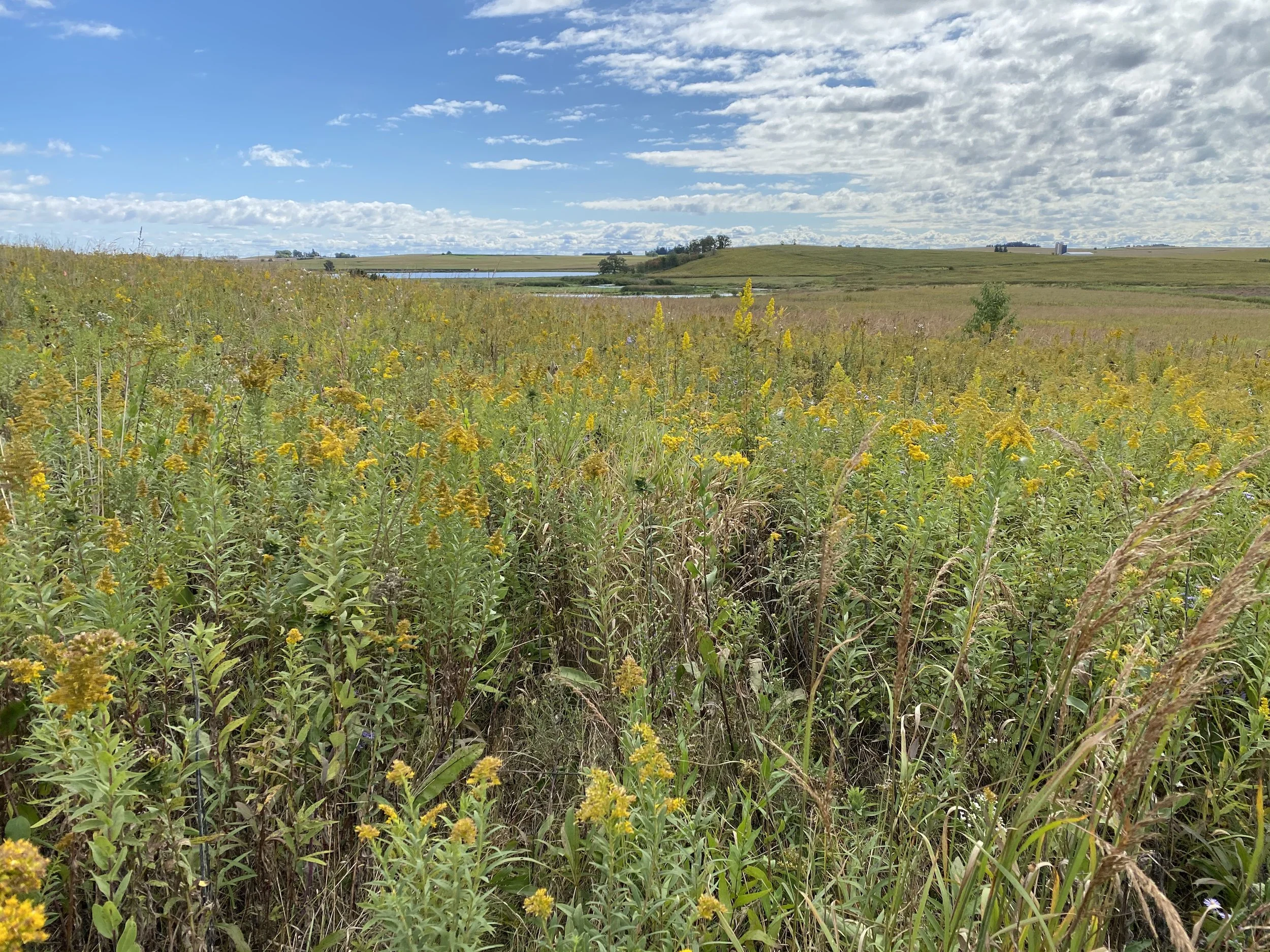A few dedicated seed collectors gathered at Goose Pond for the final volunteer effort of the season. We were looking for New England asters (NEAs) and white baptisia. Both are important for pollinators with New England asters being one of my favorites. A late bloomer, it and showy goldenrod are the flowers that give our migrating monarchs the nutritional boost they need before flying south.
Photo by Tom Koerner/USFWS






